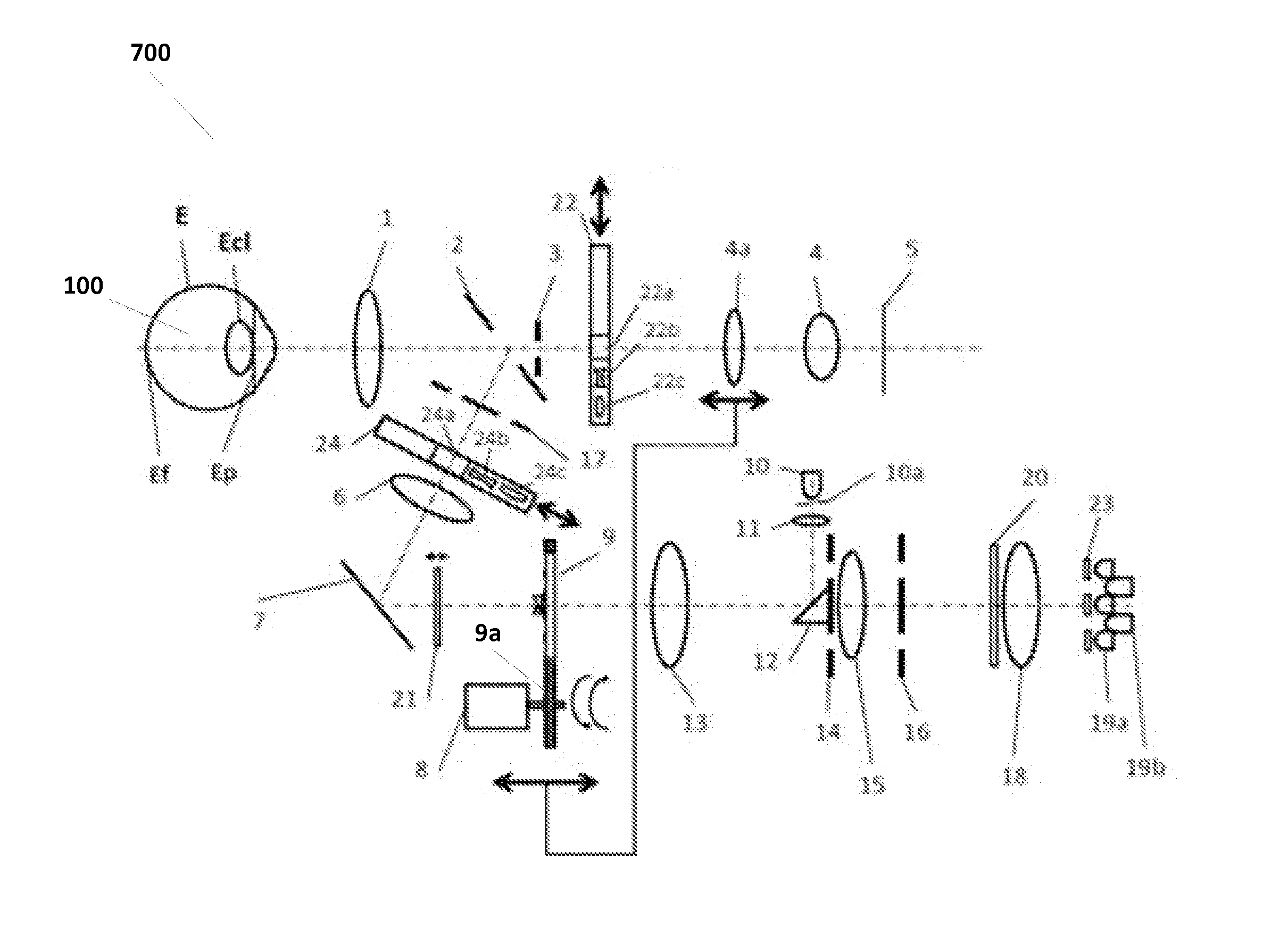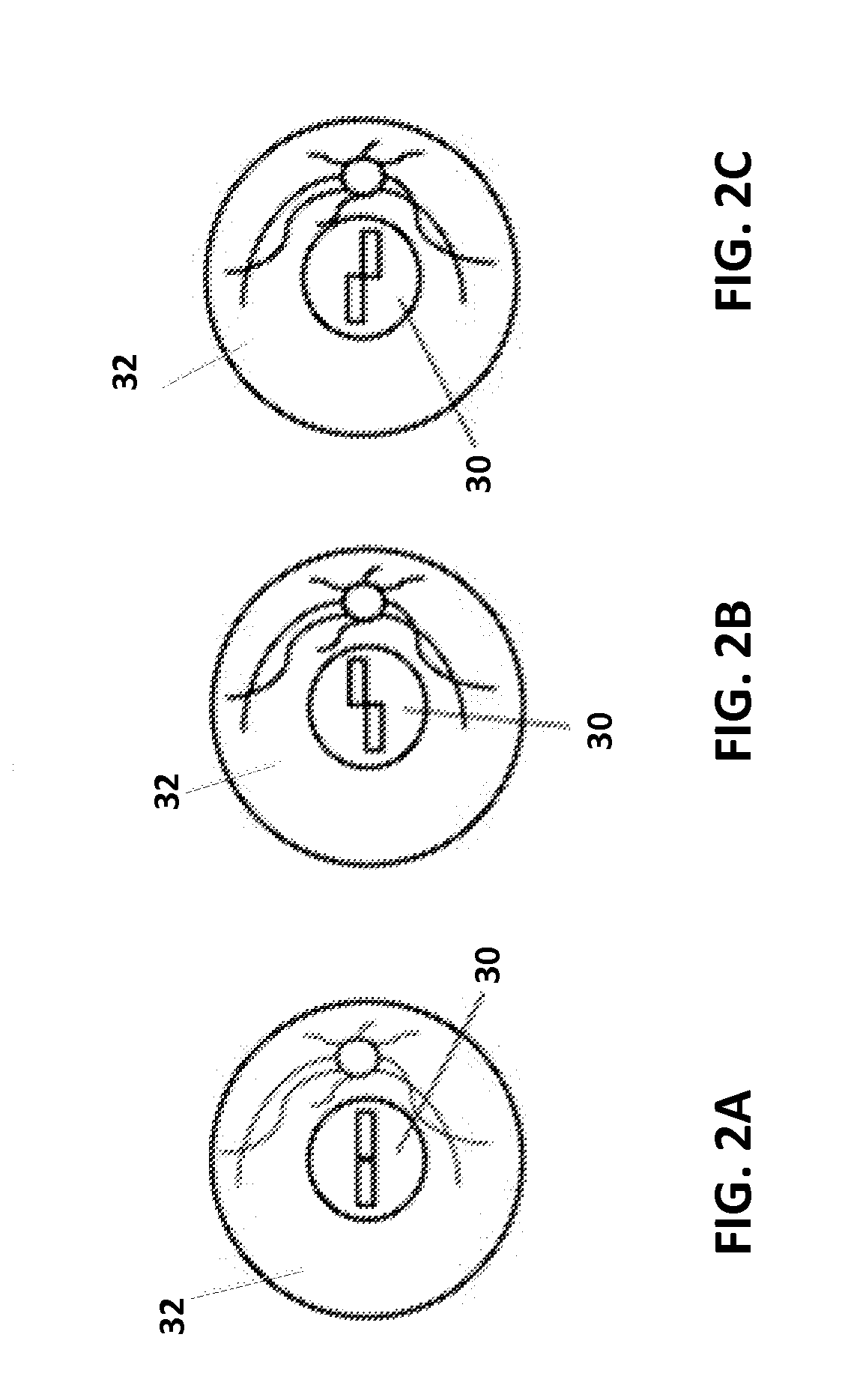Fundus camera
a technology of ophthalmology and camera body, which is applied in the field of ophthalmological photographing equipment, can solve the problems of insufficient patient care for patients with severe ametropia, limited moving range of the focus index subassembly, and inability to continuously fine-tune the focus adjustmen
- Summary
- Abstract
- Description
- Claims
- Application Information
AI Technical Summary
Benefits of technology
Problems solved by technology
Method used
Image
Examples
Embodiment Construction
[0041]Embodiments of the present invention are described herein with reference to the exemplary drawings.
[0042]According to some embodiments of the present invention, a system and method of changing the illumination path to match the amount of diopter variation in the imaging path with a DC lens is disclosed. This allows continuous fine-focus adjustment using the focus index 30 (the split-bar) to be achieved without increase in size of the optical system. In some embodiments, a tunable lens can be used individually in either the imaging or the illumination path. Or a tunable lens can be used simultaneously in both the illumination path and the imaging path to allow continuous fine-focus adjustment.
[0043]FIG. 5A shows an exemplary schematic of a fundus camera 502 according to some embodiments where sensor 5 is movable. In FIG. 5B, a DC lens 22b is inserted into the imaging path and another DC lens 24b is also inserted into the illumination path between the cornea diaphragm 17 and the...
PUM
 Login to View More
Login to View More Abstract
Description
Claims
Application Information
 Login to View More
Login to View More - R&D
- Intellectual Property
- Life Sciences
- Materials
- Tech Scout
- Unparalleled Data Quality
- Higher Quality Content
- 60% Fewer Hallucinations
Browse by: Latest US Patents, China's latest patents, Technical Efficacy Thesaurus, Application Domain, Technology Topic, Popular Technical Reports.
© 2025 PatSnap. All rights reserved.Legal|Privacy policy|Modern Slavery Act Transparency Statement|Sitemap|About US| Contact US: help@patsnap.com



